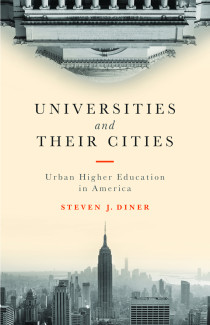
Johns Hopkins UniversityEst. 1876
America’s First Research University
OAH: Universities and Their Cities

As scholars of American history meeting in New Orleans, we certainly do not need to be reminded of this city’s dynamic history. Nor do we need to be reminded of the complex history of America’s urbanization and the growth of its cities. Yet historians of American higher education have devoted remarkably little attention to the role of universities in American urban life, and to the way in which cities helped to shape the evolution of America’s colleges and universities at which most of us teach, study and write.
Having lived in cities all of my life and having studied, taught and led universities in cities for most of my adult years, I decided, after completing ten years 
In the nineteenth and early twentieth century, college education was seen as a way to build character in young men, and this could not be done in a city with its evil influences. Character building also required living adjacent to trees. Private institutions in major cities, like Columbia and U. Penn, moved several times to escape their growing cities. Eventually they learned that cities would keep growing, so they built walled campuses with lots of trees to protect their students from the city. Until well after World War II, higher educators expressed deep hostility to urban commuter students, complaining that these working class students, largely from immigrant families, completely lacked social refinement. Therefore, they argued, everything colleges tried to teach them during the day was undone when they returned to their city neighborhoods at night.
Educators have long debated what it means to be an “urban university.” The prevailing view has been that the term referred to institutions with large numbers of commuter, working class, immigrant and black students. Private selective institutions in cities denied that they were “urban universities,” a term they considered pejorative. Nonetheless, concern about the growing social problems of cities in the twentieth century stimulated institutions with urban locations to engage systematically in service to their communities, and strongly encouraged the development of urban research. And as universities in cities expanded to meet the post-World War II demand for college education and took advantage of urban renewal programs, they frequently found themselves in conflict with residents of surrounding neighborhoods, a phenomenon that continues to this day.
If any of this interests you, take a look at the book. Or we can chat. What a nice thing to do in a great American city!
Steven J. Diner is a University Professor at Rutgers University–Newark, where he served as chancellor from 2002 to 2011. The former president of the Coalition of Urban and Metropolitan Universities, he is the author of A City and Its Universities: Public Policy in Chicago, 1892–1919, and A Very Different Age: Americans of the Progressive Era.


